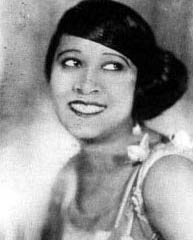(What Did I Do to Be So) Black and Blue
Fats Waller, Andy Razaf, Harry Brooks, 1929 |

 |
What kinds of discrimination was the singer of this song experiencing in the 1920s? Jim Crow, lynching, KKK. Are there any particular lines that seem to refer to those experiences? |
 |
Would this be a song that would be sung today without changes? What do you think of the line, "I'm white but it's inside"? Would this line likely make it into a song today? Why or why not? What changes have taken place in the African American community since then that would make that line unlikely to make it into a song today? Civil rights, Black pride movements, etc. |
 |
What aspects of this song still ring true? Why? Frustration at being held back by prejudice about something you cannot change about yourself. Even though Jim Crow is dead, what injustices still remain? |
 |
What style of music is this? Blues. How does the style of this song relate to the words? Play on "blues" word, sets the mood of the song. How effective is this combination of lyric, tune, and style? Would this song have the same effect if it were sung in a different style from this era? (Jazz, Tin Pan Alley, gospel.) |
 |
What songs today have taken on the same theme? How are their messages similar? How are they different? |
|
 "(What Did I Do to Be So) Black and Blue" performed by Ethel Waters on The Incomparable Ethel Waters, Sony Music Entertainment, © 1925. Available on iTunes, Spotify, and YouTube. "(What Did I Do to Be So) Black and Blue" performed by Ethel Waters on The Incomparable Ethel Waters, Sony Music Entertainment, © 1925. Available on iTunes, Spotify, and YouTube.
Ethel Waters (1896–1977) was one of the most influential and popular African American singers of the early 1900s. Many singers tried to imitate her vast range and distinctive style. She influenced such notable singers as Bing Crosby and Ella Fitzgerald. Waters began her career by touring with vaudeville shows. She moved to New York in 1919, just as white audiences were beginning to acknowledge and appreciate African American music and talents. She recorded this song in 1930. |

Rights have not been secured for this song. Lyrics may be viewed here:
https://genius.com/Louis-armstrong-black-and-blue-lyrics |
|
 When this song made its debut within an African American musical revue called Hot Chocolates, it was sung by Edith Wilson, a Black singer who sang it on a stage draped entirely in white. Perhaps the stark contrast of the setting communicated the sentiment of the text with such impact that the audience, somewhat startled, responded initially with nervous laughter. However, they became more serious once they comprehended the song's meaning. When this song made its debut within an African American musical revue called Hot Chocolates, it was sung by Edith Wilson, a Black singer who sang it on a stage draped entirely in white. Perhaps the stark contrast of the setting communicated the sentiment of the text with such impact that the audience, somewhat startled, responded initially with nervous laughter. However, they became more serious once they comprehended the song's meaning.
 |
| Edith Wilson |
Lyricist Andy Razaf (1895–1973) (originally Andriamanantena Paul Razafinkarefo) was an African American writer whose lyrics often dealt with racial conflicts in America. He stated how he was forced to write this song by Dutch Schultz, a notorious gangster, at the point of a gun. Schultz's instructions were "very explicit" (Singer, p. 217). "Feel like old Ned" in the first chorus refers to a minstrel song about an enslaved man worn out from work.
The music was composed by Fats Waller (1904–43) who was raised in Harlem where he started as a theater organist but later transferred his talents to jazz composition. He is best known for his hits "Ain't Misbehavin'" and "Honeysuckle Rose," both of which were composed with Razaf. |

mark of Ham: Ham, one of Noah's three sons, was believed to be dark-skinned. He was cursed by God for misbehavior, though this was misinterpreted as his being cursed for being black. |

Compare this song to:
"The Desponding Negro" (Unit 2).
"Say it Loud, I'm Black and I'm Proud" (Unit 8)
"Chocolate City" (Unit 9) |

How would you change the lyrics of this song to reflect how things have changed for African Americans? Rewrite the words to reflect current attitudes. How does the music fit the new words? If it isn't appropriate, what style would better fit? |
|


